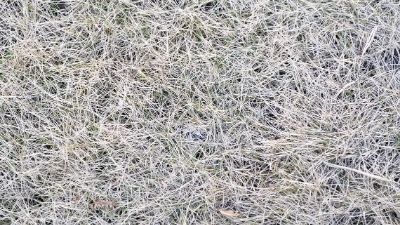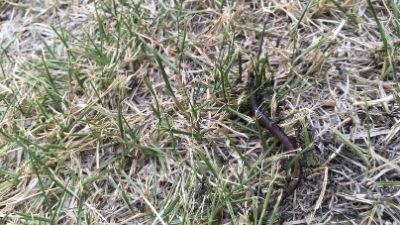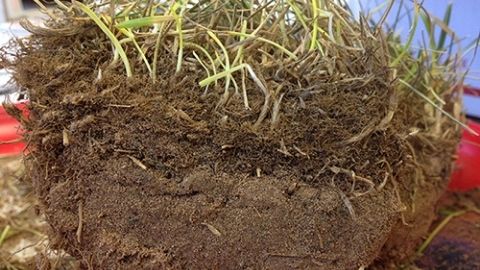Renovate your Lawn After a Long, Hot Summer

Introduction
After a long, hot summer, your lawn can look pretty sad. The heat and drought conditions take a toll, because most of our turf grasses are adapted to cool weather. During the heat of the summer, they stop growing and often go dormant. If conditions become hot and dry enough, the lawn may even begin to die out in some areas. This will cause the lawn to look thin, weak, or have many dead patches throughout. Fall is a good time to revive your lawn. As temperatures cool and moisture becomes plentiful, some of the brown patches will likely green up. By September, those areas that haven’t greened up are going to need some help. Here are some suggestions for revitalizing your lawn.
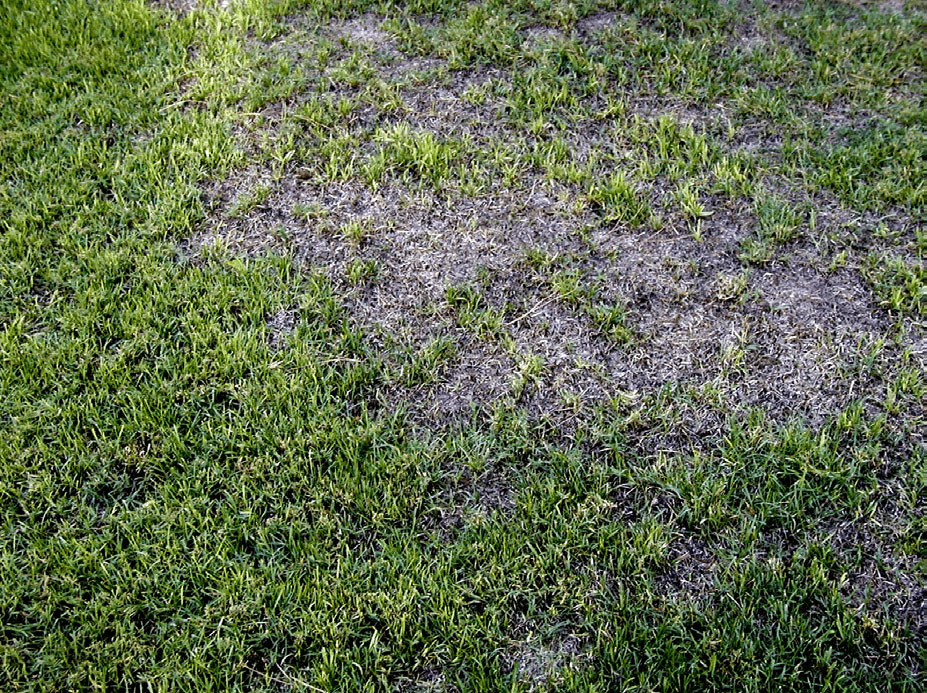
Symptoms and Diagnosis
Grass may die out from causes other than heat and drought. A little examination of the affected area will help you determine the cause and choose the right course to take. One of the most common problems is improper watering. Because most of us have our automatic timers set to run during the early morning hours, we don’t actually see the sprinkler running. Run a manual cycle and check to be sure sprinkler heads are not plugged and are properly aligned to the lawn area they are supposed to cover. If you have ruled out sprinkler problems then check for insect damage.
Tug on the lawn and see if the roots or individual blades appear to be severed. Diseases are also a possibility. The most common cause for disease is over watering. Cut back water and see if the problem spreads. In this bulletin, reference is made to re-seeding and over-seeding. Although there is not much difference between the two, reseeding is generally done when large areas are dead and there is no live grass left. Over-seeding is useful where the lawn has thinned out but has 50 percent live grass left.
Insects
Damage from a number of insects may have occurred during the summer. White grubs are often the cause, but be aware that there are other insects that can damage the lawn as well (i.e., sod webworm, and billbug.) Pay particular attention to the type of damage and when it first occurs. Try to pull up the sod by grasping a handful of the dead turf. If the sod lifts easily like a carpet, then you may have grubs. Look for white larvae just under the sod layer. Grubs are larvae of the Green June Beetle, Black Turfgrass Ataenuis or the Masked Chafer. They can cause extensive damage to the lawn by tunneling under the roots. An insecticide treatment may be needed. Contact your county Extension Service for recommendations on what chemicals to purchase and when to use them. Applications should be made mid- to late-summer before the weather begins to cool. As the soil begins to cool off, the grubs will go down deep and become
difficult to control. Water should be applied immediately after application to move the insecticide down into the root zone.
Disease
If the sod doesn’t lift easily like a carpet, you may have had a disease. Look at the live grass at the edge of the dead area to see if the problem is still spreading. See if the affected area is getting larger. A USU Extension Agent can help you diagnose a lawn disease and determine if a fungicide will help. In most situations, a fungicide is not recommended. Lawn diseases usually come and go rather quickly. Although they can cause a lot of damage, they are generally very short lived. Time and money are better spent repairing the dead areas. If the grass is dead down to the roots and hasn’t greened up, you will need to re-seed.
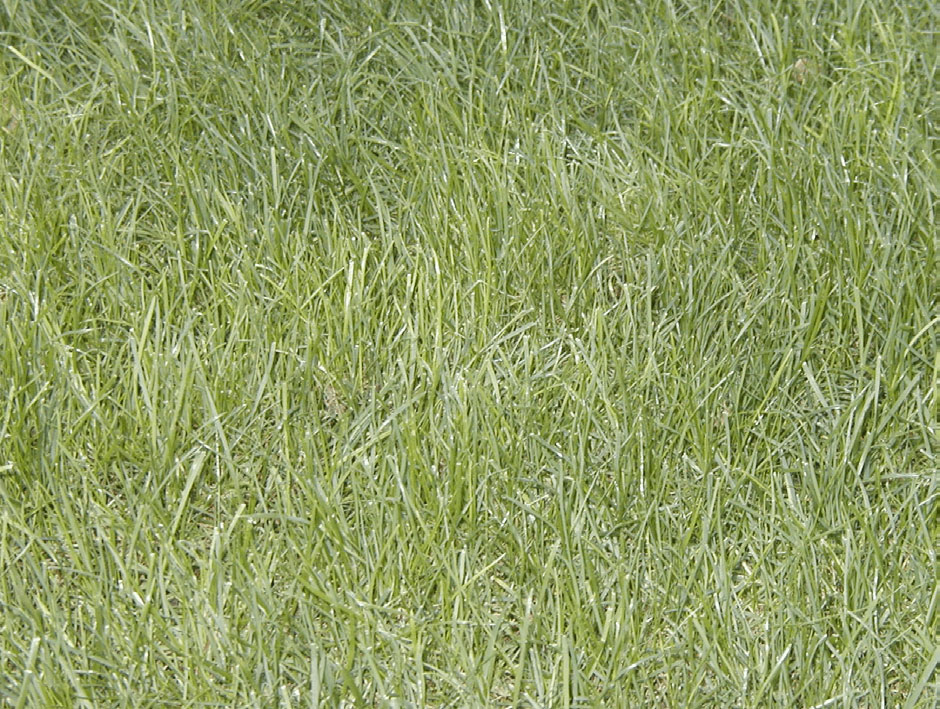
Management
A lawn generally needs to be re-seeded when all or most of the grass in a particular area
is dead. Prior to re-seeding, the dead turf must be removed, making way for the new seed to be applied. Instead of re-seeding, sod may be purchased and put in place. Lawns are often a mixture of two or more different kinds of grass. Bluegrass and Tall Fescue are the most common turf varieties found in lawns. If your lawn has thinned out and looks clumpy rather than showing large dead areas, it is likely that you have lost one of the varieties to drought or disease. If no more than 50 percent of the total area is dead, then you should consider over-seeding. Overseeding will take less time and money than re-seeding an area but will only work where you still have a partial stand (see over-seeding). Remember that Bluegrass is not as tolerant of drought or disease as Tall Fescue; however, all varieties may recover once temperatures become cool and rain returns or irrigation water is applied. Tall Fescue will green up after being stressed but may look a bit clumpy. Rather than removing the existing grass, over-seeding is a way of thickening up your lawn without causing damage to the existing turf.
Soil Testing
Soil test results can tell you a lot about what your soil may need to grow a healthy lawn. If test recommendations call for some fertilizer or other amendments, this is a good time to apply them. Till amendments three to four inches deep if you are able. The idea is to put nutrients and organic matter down into the soil so it is available to the root system for many years. This encourages a healthy lawn that will stand up to drought and disease. Even if you do not plan to amend the soil, you should loosen up the top couple of inches to make a suitable seed bed. Where there is a layer of dead sod, it may be very difficult to till. In these situations, you may consider having the entire area worked with a core aerator or power rake. You may choose to have this done commercially, or rent the equipment and do it yourself.
Over-Seeding
Sometimes the lawn has suffered moderate damage from insect or disease pests. In this situation where the lawn has thinned out, but at least 50% of the area remains in desirable grass, over-seeding is a good option. Soil preparation for over-seeding begins by mowing the existing turf a little shorter than normal (about 1 ½ inches). With over-seeding, rather than disturb the entire area like we do when
we till the ground, we use a rake or power tool that opens up the soil (in the bare areas) just enough to allow seed to be planted through the existing grass. The object is to loosen the ground enough to allow new seed to come in contact with the soil. If the area
is small, a stiff hand rake will do the job. Larger areas will require the use of equipment such as a core aerator. Once the soil is loosened, the seed may be applied. If the area is small, hand application of the seed is fine. If the area is large, a mechanical seed spreader is recommended.
Re-Seeding
If you have determined that re-seeding is the best option for your site, then you should first check for troublesome weeds. Difficult to control perennial weeds should be dealt with first. If there are only a few, you may be able to remove them by pulling or digging. Tap-rooted weeds such as dandelions can be removed this way. A selective chemical for broadleaf weeds (Trimec or Weed-Be-Gone) may also be used, but this generally requires a waiting period of about 6 weeks before re-seeding. Other more difficult to control weeds, such as Field Bindweed, Johnson grass or Quack grass, may need to be sprayed with a non-selective herbicide such as Roundup. If you use Roundup, realize that it is non-selective and will kill all vegetation including desirable grasses. For this reason, it is only suggested if you have a large area of very difficult to control weeds. After application, you will need to allow 10 to 14 days for the Roundup to move to the root zone and kill the entire plant. Now you are ready to begin preparing the seed be .

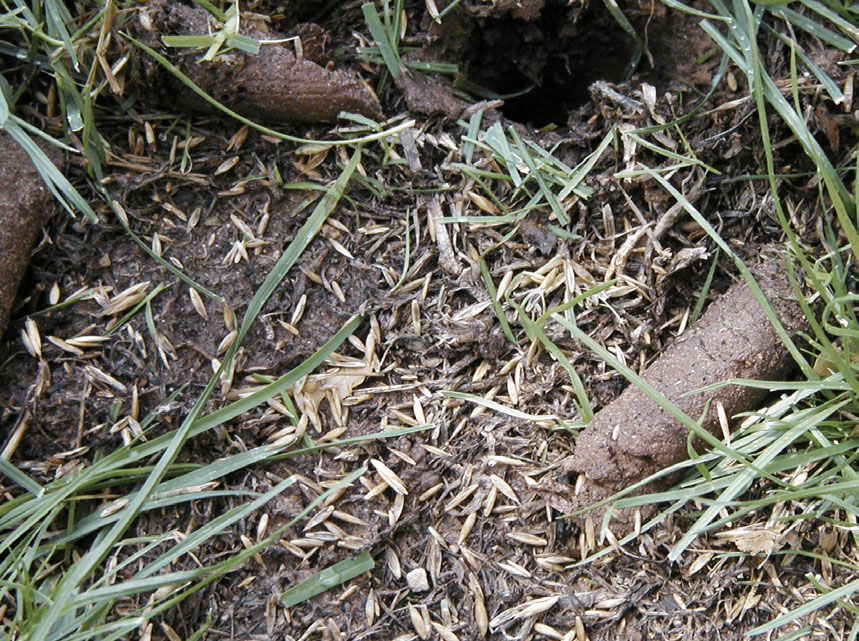
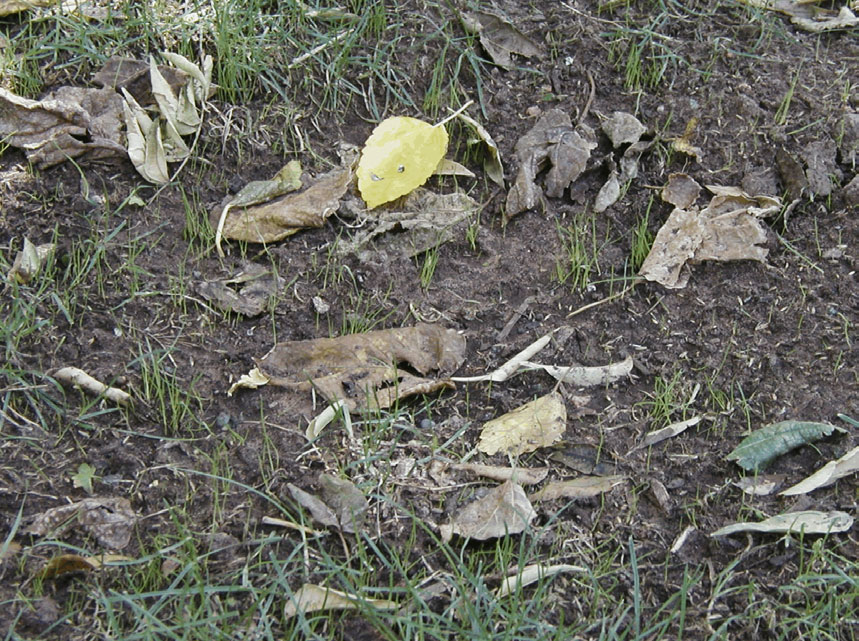
Varieties
There are many varieties of grass, but only a few that are suited for lawns in Utah. Kentucky Bluegrass is a fine-textured grass that spreads by rhizomes. It has a dark green color and many people like how it looks. However, it is not as resistant to insects and diseases as Tall Fescue. It also shows signs of stress as soon as it gets hot and dry. It will go dormant when dry and may return when watered again, or, it may die out entirely if left without water for too long.
Fine Fescue (Red Fescue) is another grass that spreads by rhizomes. It is recommended only in areas where there is a fair bit of shade. It will not tolerate heat and direct sun; therefore, use only under established trees or areas of the lawn that do not receive direct sunlight.
The newer varieties of Tall Fescue that have been available in the last 10 to 15 years are much finer bladed and better textured for lawn use than the older varieties. They are also more resistant to disease than other lawn grasses. Tall Fescue is considered a clump or bunch grass. It does not spread by rhizomes and must be seeded at a heavier rate than bluegrass in order to have a good stand. One of the most important features of the “turf type” Tall Fescues is their ability to resist drought. They are more tolerant of dry weather than any other grasses discussed here.
Perennial Ryegrass has also been improved in recent years. Older varieties were prone to fungal diseases and not recommended at all for lawn use. It is sometimes used today to establish a quick cover on an area that is steep and may have erosion problems. Seed dealers may include small amounts (10-15 percent) of ryegrass mixed in with other grass seed. The rye will come up quickly and offer some shade to remaining seed. This is also helpful where the soil may form a crust easily and make it difficult for seedlings to break through the surface. However, ryegrass in general is not suggested as a grass seed for home lawns except for uses mentioned here.
Conclusion
Hot, dry weather can cause a great deal of stress on home lawns. This may lead to thin, poor, quality turf. Pests such as insects and diseases may cause large areas of lawn to die out entirely. Once you diagnose the problem, you can begin to make plans to renovate the damaged areas. Fall is the best time to renovate you lawn. Over-seeding of thinned out areas is a good way to improve lawn quality. Severely damaged areas may need to be dug up and re-seeded.
To help prevent damage in the future, here are a few tips for maintaining a healthy lawn:
- Do not mow too short. Cool season grasses should be mowed no shorter than 2 1/2 to 3 inches.
- Fertilize each year. Lawns need 3-4 pounds of actual nitrogen per year per 1,000 square feet annually. Most of this should be applied in the Fall with a light amount going down in the Spring.
- Don’t not allow heavy foot traffic, especially when the weather is hot and dry or turf is excessively wet.
- Water according to the weather conditions and your particular soil type. Over-watering can often cause more damage than under-watering.
- All lawns will benefit from aeration. The best times to do this are Spring and Fall. In areas where heavy soils are a problem, or there is a lot of compaction due to foot traffic, annual aeration will improve water movement.
Utah State University Extension
Peer-reviewed fact sheet
Download PDF
Authors
Rick Heflebower, Horticulture and Natural Resources, Utah State University, Logan UT
Related Research



